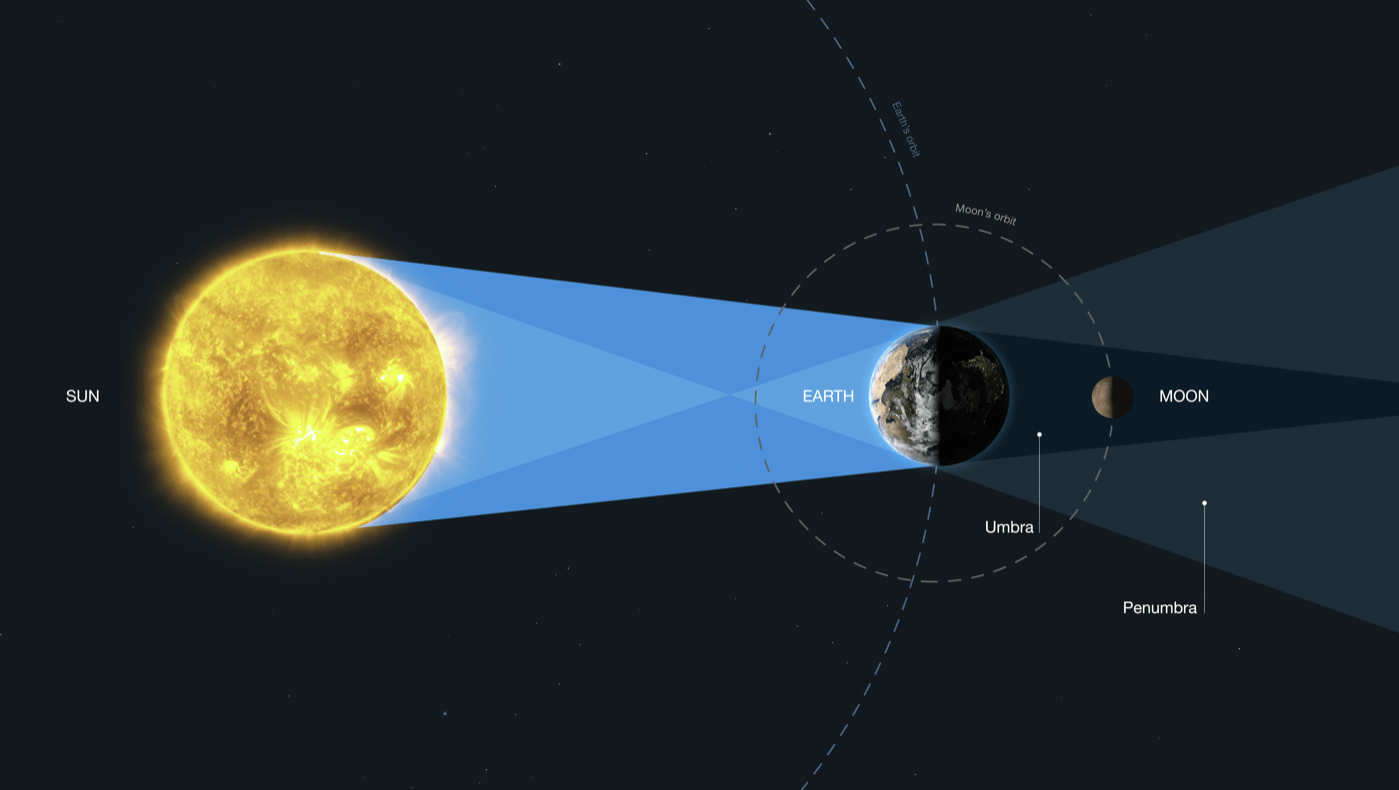Introduction to Solar and Lunar Eclipses by Tanya Anderson

This diagram (not to scale) explains the geometry of the lunar eclipse. When the Moon is entirely in the Earth's umbra (known as a total lunar eclipse or umbral eclipse), all sunlight reaching the lunar surface has been refracted or scattered through Earth's atmosphere. When the Moon is in Earth's penumbra (known as a penumbral eclipse), illumination comes from both direct sunlight and sunlight refracted and scattered through the planet's atmosphere. This process is similar to an exoplanet transit observation.
| Levels |
|
|---|---|
| Material Type |
|
| Heliophysics Big Ideas |
|
| NGSS |
|
| Heliophysics Topics |
|
| Heliophysics Missions |
|
| Material Cost per Learner | Free |
| Language | English |
In this 5E middle school lesson, students use videos and NASA websites students (in small groups) to investigate and create models of a solar eclipse and a lunar eclipse. Learn more at: https://outreach.gi.alaska.edu/nasa-heliophysics/heliophysics/introduction-solar-and-lunar-eclipses-tanya-anderson



























